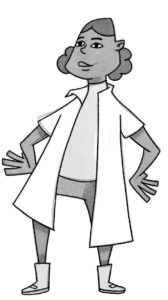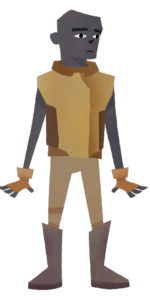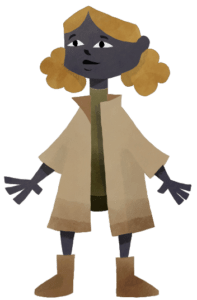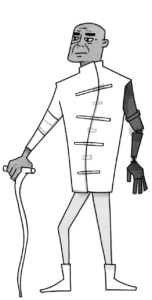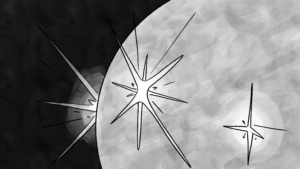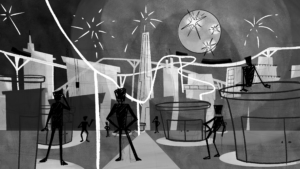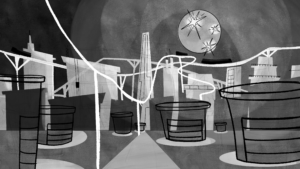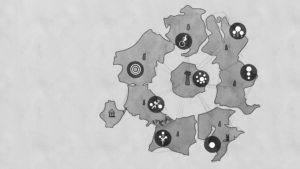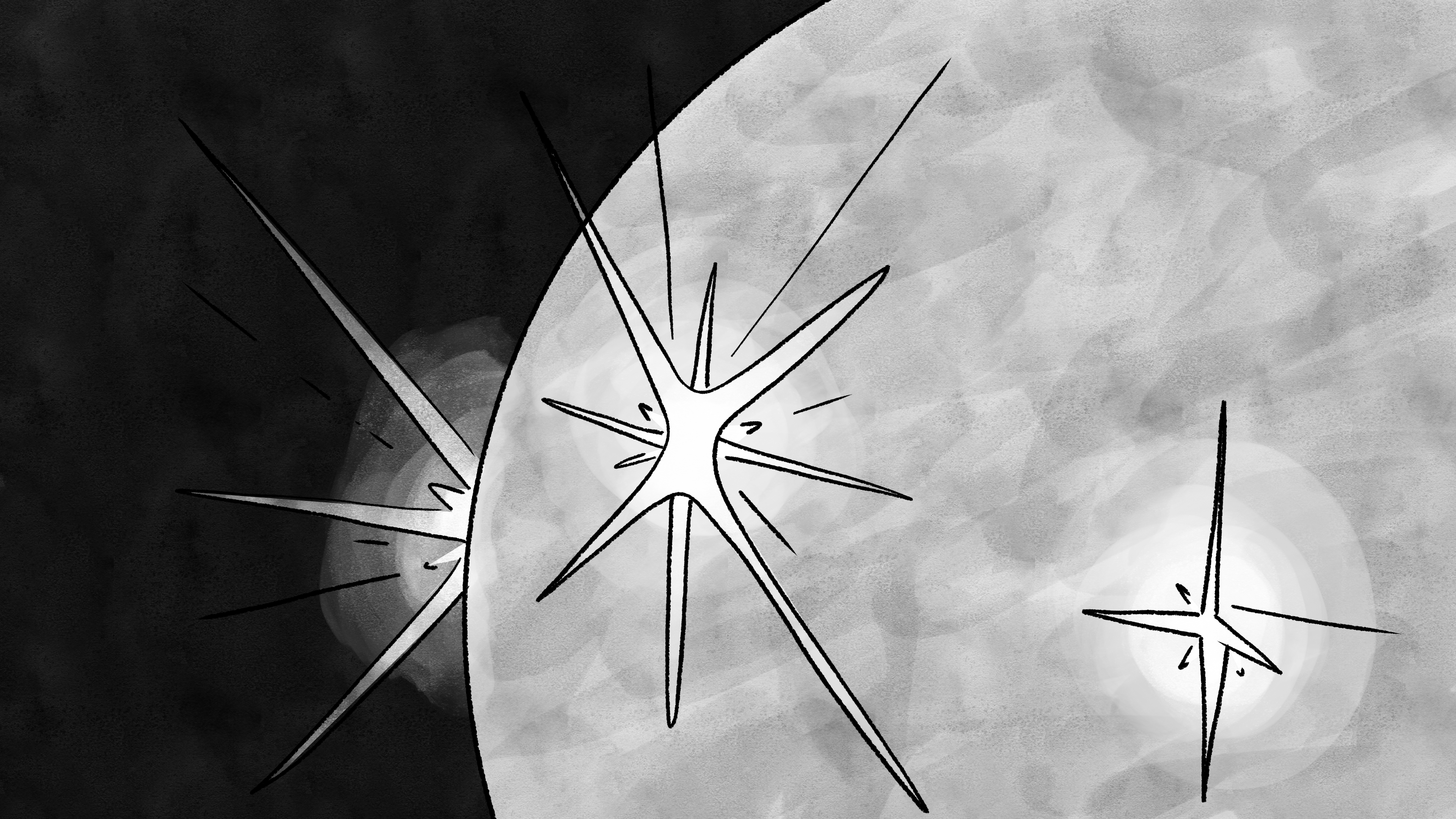Overview
Premise
The game follows the story of a family from the fictional “territory” Solaria as they grapple with loss, economic adversity, and limited decision-making power in defining their own mechanisms for survival. Abena is showing early signs of sun-sickness and the family’s “only way out” is by working in the mines to make ends meet. It is set in a world where genetic enhancements are in high demand and the commodities that make it possible are pillaged from a community that is left economically underdeveloped, with burden of the associated health and environmental consequences.
Message
This story explopres the exploitation of natural resources and labor, inspired by cobalt mining in the Congo. Its hard for me to reconcile the ubiquity of cobalt in our everyday lives, and the adversity in the lives
Inspiration
When I started envisioning a dystopian universe, one thing that felt unavoidable was the threat of environmental collapse and the technology that would be developed to try and avoid that at all costs. After undergrad, I worked for a national lab that conducted fusion energy research, and I was inspired by the idea of a future where fusion reactions directly from the sun had been harnessed feasibly to achieve climate harmony. What would this world/planet look like? What were the grounding scientific principles behind the technology? What kind of people would survive in this environment and how? I was less interested in the idea of space colonization, and more so in the idea of the evolution of a species. This led me down the rabbit hole of exploration massive stars, the life of the sun, and the production of matter. I conjured up the image of the sun exploding and found image of raining universal and solar matter quite striking. What would it be like to live through an apocalyptic event like this? Ultimately, the game evolved quite a bit to the point where these sources of inspiration became more in service of ornamental world-building, than of the message.
Game Progression
There are several layers of complexity to the mining issue on the personal, local, and geopolitical scales, and I set out to match this in the original outline of the progression of my game as follows:
Prologue:
Explore historical context of mining in Solaria
Part I: Home
Build clear interpersonal relationships between the main character and their immediate core family to highlight limited choices and the impetus to mine despite adverse effects.
Part II: The Mines
- Day to day activities illustrating local community interactions and dynamics.
- Contextualizing seriousness of decision to join mines and struggle to progress towards goal:
- Environmental consequences
- Manual labor consequences + health complications
- local level corruption (Sector 4 government corruption) + resource exploitation
- Racism (internal and external
Part III: The capital
- Illustrating wider geopolitical interactions
- Large scale corruption + collusion between parties with vested interests
- Imperialism, destabilization
- Inequality + Manufacturing value add:
- Evident disparity + benefits reaped from manual labor.
- Racism + turning a blind eye/complicity.
- Large scale corruption + collusion between parties with vested interests
Part IV: conclusion + Epilogue
Implications.
While the story doesn’t ultimately follow these sections, there are elements of all these considerations sprinkled through the gameplay.
Playtest 1 – Version 1: The original Premise
Group demographics:
Stanford Upper Undergraduate / Graduate students all acting as game designers in respective projects, all of Asian descent.
Prototype Description
My first prototype was based on the original premise of the game: i.e., you wake up one morning and the sky is on fire because of a supernova event. What do you do and what relationships did you prioritize? I wanted to explore classism and how access to certain social protections is guaranteed for some while stripped away from others. My thinking was that an apocalyptic level event would take these interplays to the extreme.
As for the mechanics, I wanted the decisions to feel like they were being made in real time, and like the players were reacting to things as they came up with little context, so I wrote it all in second person present.
I had the players go through the PowerPoint slide deck below making these decisions, and then followed up with a more in-depth conversation about worldbuilding, motivations and logic.
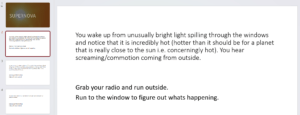
Feedback & Changes
- One student (Student A) expressed excitement about the worldbuilding and was looking forward to seeing how the premise and the lore unfolded.
- Student A thought that the writing style and the delivery felt appropriate – they liked the present tense, and didn’t share the same worries that I did about it being too text heavy (though I still was interested in pursuing a more comic style medium)
- Student B pointed out logic gaps, and provided several strong counterpoints to the rules, assumptions and premises that I had set up in the earlier worldbuilding:
- For example, the logic behind the water crisis on the planet didn’t really work because how does one mine underground water, and how is it finite and fought over if water is recyclable.
- Student C seemed to suggest that a climate catastrophe focus would be more compelling.
- The instructor recommended that I spent time building out a lore document to get a better grip on the world
Changes: I dropped the water scarcity lens in response to the above three comments and started a new world building document which I encourage you to skim through. I (possibly regrettably) spent too much time on this portion over other more critical aspects of the game design, though I had a blast. I think this made it easier for me to craft a richer story that people in later playtests said they would love to read as a book.
- The instructor also recommended crystallizing the message that we were trying to get people to care about, and I felt that mine was lacking a clear, concrete message at the time.
Changes: I shifted to a new, more clearly defined message: “I want people to care about the personal, historical, and geopolitical crises around resource exploitation mining.” I think this made my approach to the design a little more focused, which in turn made the game itself a little more focused than it would’ve turned out. I also shifted the focus of the world building from the environmental and environmental technology situation to interpersonal and geopolitical relationships. I think this was beneficial because a larger focus on the environmental components would have led me to focus more on ornamental world building than on sharing the message which is more closely associated with relationships.
Playtest 2 – Version 2: New Story
Group demographics:
Stanford graduate student in game designing class and of Asian descent.
Prototype Description
The focus here was on intro to the new world and getting a reaction to an end state scheme where despite all the choices, the player always ends up in the mines.
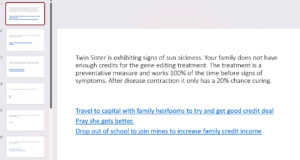
Feedback & Changes
- Was amused by how all the choices ended up with him in the mines.
This reminded me of the article about being in a lusory mindset to learn, and I feel like I could see him understand the tragedy in the system a little better.
- The world building details are good, would be interested in seeing a full fleshed version of it.
- He was able to pick up on the message.
Playtest 3 – Version 2.5: New Story + Additional Visual Embellishments
Group demographics:
Two international (East + Southern African) women in early 30s, part of the Stanford Design Masters Program.
Prototype Description
The focus here was to explore different kinds of touchpoints and interactions in the game.
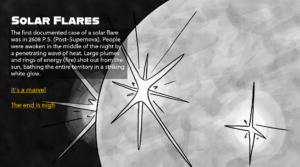
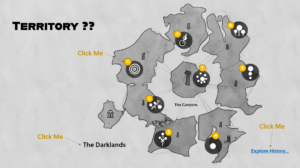
Feedback & Changes
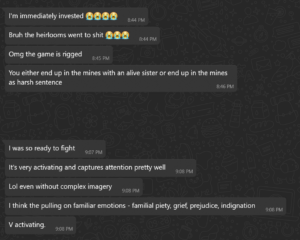
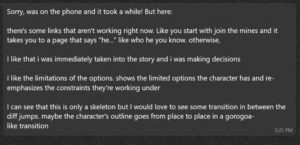
Playtest 4 – Version 3: Story in bits, Prototyping in Inky
Group demographics:
Two game design Stanford graduate students: one Black, one Asian, early to mid 20’s.
Prototype Description
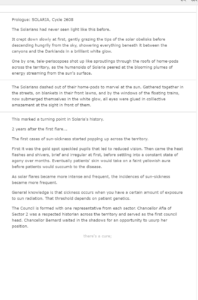
Feedback & Changes
- Curious about the choice of first vs second perspective
Changes: Where possible, I coded the game so that when the character spoke, it was a direct result of a choice from the player. I wanted it to feel like the players themselves were thinking/saying certain comments as opposed to some external abstract figure telling them that they said/felt something.
- Likes world-building details and excited to read the rest
- Feels invested in the relationships between dad and daughter and enjoys the mom’s back story.
- Tying the theme to the specific family feels more impactful because stakes feel more visible.
Changes: I tried to introduce more conversations about the theme in the context of interactions between the family members. For example, there is a conversation in one timeline between Kofi and Abena about the unfairness of sector 4 dying in Waradium mines, while everyone else benefits. Then the dad and Abena have dinner while listening to news about poor mining outcomes. I think ups the emotional association with the themes.
Playtest 5: Full Story
Group demographics:
Stanford graduate student in game designing class and of Asian descent.
Feedback:
- Some choices feel hard in a good way. It made them think.
- Felt that the pet/animal creature would come in more, I imagine they didn’t really see the point in including the animal if it wasn’t going to contribute more significantly in some way.
- Questions about the various end states of the game
I included a couple more observably different branches to the gameplay
Playtest 6 :Mechanics Development
Group demographics:
Mid-twenties Biophysics Senior/Coterm at Stanford University
- Took a while for the story to ramp up but when it did it was engaging, would enjoy the story as a book.
Changes: sought a more appropriate balance by cutting out unnecessary chunks in the prologue and revealing them later in the story at different points. I think this helped re-introduce some of the initial early on engagement that people liked in previous iterations, while allowing me to still provide some context at the beginning. I think the context was necessary because the world building was a little dense and without that initial aide then people might feel too lost to engage.
- Was less interested in the sections that were more heavy exposition based.
Changes: I did a full pass through the game where I condensed those sections, and broke them up with player actions, even if that was just to provide more context, introduce a new scene or initiate dialogue (as opposed to decision-based choices)
- Sometimes it felt like there was a long series of “one choice decisions” that made her feel like she was just clicking through a story and not playing a game, and not as engaged.
Reduced the occurrence of single decision choices, especially in the opening because that sets the tone for the game.
- Really enjoyed mechanics that allowed for exploration, like when she had to figure out which spot in the fence was weak, or when she had to go look for batteries: to her those felt more like game play than the other decisions which didn’t feel as “real”/ felt like engagement just to advance the story in the way the author crafted it.
I expanded on these kinds of scenes in a subsequent prototype. For example, I included search-based rooms where the player chose to explore a library of sorts and enter different chambers and learn different things. I would enforce entrance into one or two rooms with key plot details, but otherwise they were left with freer reign. I think this is makes the choices more engaging because the player had to sit, prioritize and form mental models to synthesize a choice.
Playtest 7: Mechanics + Character Development
Group demographics:
Female, Asian, mid-twenties, Chemical Engineering PhD candidate at Columbia University .
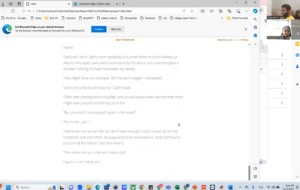
- This player took a much more considered approach to decision making. For example, she made sure to keep/take everything that she could (e.g., “holo-cards”) because you’d never know if they would come in handy later in the game play.
Changes: I included mechanics where after some point the player has to start making trade-offs between the items in their bags and new items they want to take. These decisions would then influence what they could and couldn’t do in the story. For example, if they didn’t have the right tech, they couldn’t look up a certain character and therefore couldn’t enter a storyline where they interact with that character. I think this was a good approach because it helped make some of the decisions feel more real.
- Picked up on the message easily.
- She said she cared a lot for the character Kofi because he felt lived in with respect to having hobbies and a particular space and characteristics. On the other hand, Abena felt more generic, and the story would’ve benefited from getting us to care a little more about her.
Changes: Included more characterization through speech patterns, mannerisms and tones to make Abena feel a little more lived in.
- Had an easy time visualizing the story because of the writing crafts.
Reflection
Scope and limits
I think first and foremost I learned some very loud and powerful lessons in scoping and being honest about my personal limits. I was excited about/committed to exploring game illustration, animation, and coding on unity, none of which I’d done extensively before. I spent a lot of time developing the game art (early prototypes seen below) instead of focusing more on the story, which is where I should have been focusing. I also spent a considerable amount of time on the world building which was, in fact, helpful but not critical. Having gone through the sever backlash of seemingly never-ending scope creep and its physical, emotional, and mental tolls, I think next time I will focus on taking a better paced and considered approach.
Story development methodology
I wrote a semi-finished outline/plan, then in large part ignored it when writing the story as new ideas exciting ideas came up, then felt burnt out at the end when I still had large chunks to finish despite having already committed large swaths of time to this. This is like the first point in that I learnt how easily things can become unruly and get away from you. I was editing and expanding the first parts of the story without even having drafted the later parts, and this ended up compromising the quality of the later parts in my opinion. I think in the future I will focus on finishing full-ish drafts before engaging in in-depth editing.
New tools
I used new software to create this game. I learnt how to use inky and unity (though to a lesser extent). I think next time I would prioritize prototyping in the software and watching tutorials earlier. I worked in PPT for a lot of the smaller prototypes which was helpful but didn’t give me much time to spend learning how to use the final tools. I also learnt a lot of alternatives, more streamlined ways of doing things after the fact because I skimmed tutorials or didn’t watch them early enough.
Appendix
Character Design + Illustration
